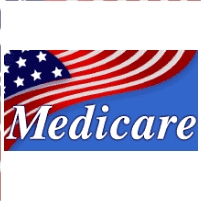Why Americans Pay More for Health Care and Get Less
Monday, June 29, 2009

Between steady cost increases in the private health care market and a lack of willpower on the part of Congress with Medicare, it’s no wonder the United States is facing skyrocketing costs for its medical care. According to the Department of Health and Human Services, health care spending has increased by more than 7% a year, outpacing the rate of economic growth in the U.S., thanks to rising deductibles and copayments.
Americans with preferred provider organization (PPO) plans have seen their deductibles rise 30% in just two years, from $1,034 to $1,344, and for those employed by small businesses, their PPO deductibles have risen 64%. Meanwhile, higher copayments also are becoming more common. In 2004, about 20% of those with employer-provided health insurance had a copayment of more than $25. Now, it’s about 30%.
Things are just as bad with government-run programs like Medicare. In 1997, President Bill Clinton and the Republican-led Congress established a mechanism—the Sustainable Growth Rate formula (SGR)—that was supposed to control runaway Medicare costs by keeping doctors’ fees in check. At first SGR worked, such as in 2002, when Medicare officials cut payment rates for doctors by 4.8%. But then Congress got cold feet, and in 2003, lawmakers postponed a scheduled 4.4% cut in doctors’ rates. From that point on, Congress continued to postpone implementation of SGR-mandated cuts. As a result, Medicare needs to implement a 21% cut by 2010, plus reductions of 5% for the next several years after that, to reign in the Medicare budget.
-Noel Brinkerhoff
Hidden Costs of Health Care: Why Americans are Paying MORE but Getting LESS (HealthReform.gov, Department of Health & Human Services)
How Congress Failed to Curb Medical Spending (by Tom Curry, msnbc.com)
- Top Stories
- Unusual News
- Where is the Money Going?
- Controversies
- U.S. and the World
- Appointments and Resignations
- Latest News
- Musk and Trump Fire Members of Congress
- Trump Calls for Violent Street Demonstrations Against Himself
- Trump Changes Name of Republican Party
- The 2024 Election By the Numbers
- Bashar al-Assad—The Fall of a Rabid AntiSemite





Comments
moreless